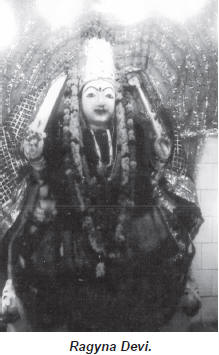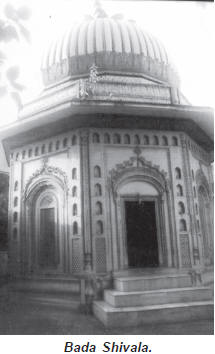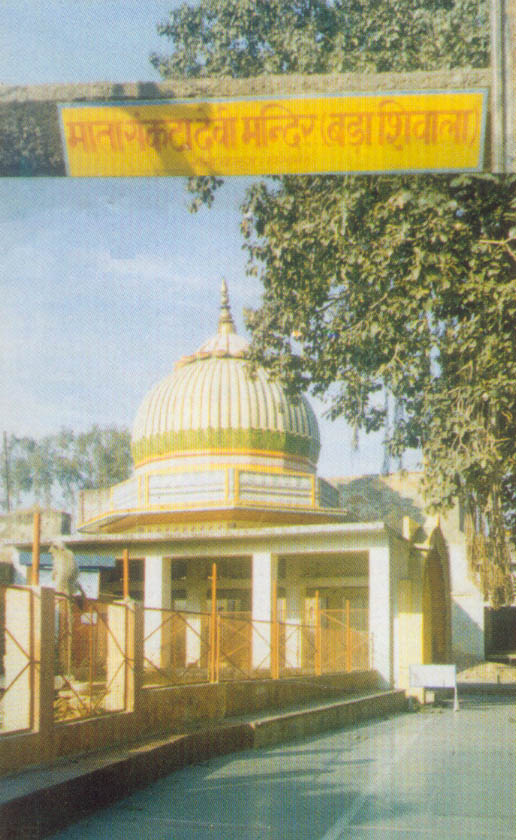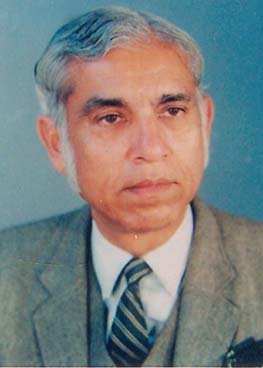Bada
Shivala of Rani Katra
A
historic symbol of Kashmiri Shaivism
By Dr. B.N. Sharga
Kashmiri Pandits re basically the worshippers of Lord Shiva, Kashmir is abode of Baba Amarnath.
Every year in the month of Sawan according to Hindu calendar lacs of
pilgrims from all over the country visit the holy cave of Amarnath to pay their
obeisance to naturally formed ice lingam, a rare phenomenon with no
scientific explanation. Kashmir even otherwise is a unique place in the sense
that it has innumerable asthapans, shrines, temples and other holy places
spread all over its area connected with different gods and goddesses. These holy
places are not only of religious and historical importance but are actually
symbols of distinct cultural identity of Kashmiri Pandits. So they should be
protected and preserved at any cost, because they represent our centuries old
customs and traditions and our existence as a distinct ethnic group in this vast
sea of humanity.

The Kashmiri Pandits who had
to leave their motherland for whatever reasons in different periods being
Shaivites built a number of Shiva temples and Shivalas in
different important cities of North India in the 18th and 19th century as nerve
centres for their community just to keep their heritage alive and vibrating even
in newly acquired surroundings. These exclusive religious places used to serve
as important centres of their social activities and mutual interaction to
strengthen the community bonds as religious functions and social gatherings in
that period were generally organised at these places for certain reasons to
maintain strict privacy on such occasion. This system actually helped our
ancestors to a great extent in preserving their distinct ethnic identity without
any dilution for about 200 years, which otherwise would not be possible in
evolving their social history.
Since Delhi, Lucknow and
Lahore used to have a big concentration of Kashmiri Pandits diaspora before
independence outside the Kashmir Valley so naturally these three important
cities have a large number of Shiva temples and Shivalas built by
Kashmiri Pandits in different times to carry out their religious obligations
without any difficulty and to keep their heritage intact.
Oudh occupies a very
important place in the social history of Kashmiri Pandits disaspora. Its ruler
Nawab Asaf-ud-Daula due to some personal differences with his mother Bahu Begum
and grandmother Sadrejahan Begum shifted his seat of government from Faizabad to
Lucknow in 1775. With this change a large number of Kashmiri Pandits employed in
the country also shifted their base from Faizabad to Lucknow and a locality
after their name known as Kashmiri Mohalla came into existence, which
subsequently played a key role in shaping the destiny of many Kashmiri Pandits
with the independence of the country in 1947. It became a nerve centre for
social awakening under the able guidance of the stalwarts of the community who
were the real visionaries and pathfinders. Various social and political
movements were launched by these men of calibre and integrity from this place to
infuse new life in the community and a bring certain reforms in it to face the
new challenges boldly and squarely.
Nawab Asaf-ud-Daula
(1775-1797) was a liberal ruler so he gave employment to many Kashmiri Pandits
on important posts in his court. One of them was Pt. Zind Ram Chowdhary, who
became the incharge of the salary of "tankha" department to give salaries
to the court employees. His descendants subsequently adopted Tankha as their
surname.
Pt. Zind Ram Chowdhari was
originally a resident of Chowdhari Bagh of Rainawari in the Srinagar district of
Kashmir. His ancestor Pt. Shankar Das Chowdhari was a mansabdar during
the rule of Mughal emperor Aurangzeb (1658-1707) in Kashmir. He earned a lot of
fortune and built a number of houses in Rainawari, his son Pt. Mahesh Das
Chowdhari became a great builder when Saif Khan (1668-1671) was the governor of
Kashmir. So that way Pt. Zind Ram Chowdhari Tankha inherited the construction
traits from his ancestors.

Actually a branch of this
Chowdhary clan left Kashmir during the rule of Mughal emperor Aurangzeb
(1658-1707) around 1670. They settled down first at Barielly, which was the
capital of Rohilkhand then. They lived there happily for four generations. When
Nawab Shuja-ud-Daula of Oudh conquered Rohilkhand in 1773 and made it a part of
Oudh Pt. Bishambhar Nath Chowdhary and Pt. Uncha Nath Chowdhary then shifted
their base to Delhi whereas Pt. Zind Ram Chowdhary came to Lucknow to join the
court of Nawab Asaf-ud-Daula.

It is said that a great
famine broke out in Lucknow in 1778. Nawab Asaf-ud-Daula then to provide succour
to the hungry subjects started the construction of Asafi Imambara for which
skilled masons and artisans were called from Iran and some other places to
execute this project. But according to historian P.N. Oak it was actually a
reconstruction and remodelling work which was undertaken to give a new look to
the already existing structure known as Panch Mahal and some ancient
ruins of a fort built at that spot probably by veerver Lakshman the
founder of the city.
Pt. Zind Ram Chowdhary Tankha
grabbed this god sent opportunity and engaged the same skilled masons and
artisans to build a magnificent structure in Rani Katra known as Bada Shivala,
which now some locals call as Sankata Devi Ka Mandir. There are many
stories connected with this rare piece of architectural beauty. This marvellous
edifice of great historical importance was a nerve centre for the activities of
the Kashmiri Pandits for a very long time when the whole area was inhabited by
them. This Bada Shivala is one of the ancient Shiva temples in the
Lucknow city. How its Lingam was brought in the narrow lane and placed
inside the sanctum sanctorium is still a big mystery.
This temple complex besides a
unique lingam a symbol of cosmic power has other idols of gods and
goddesses as well. A well chiselled idol of Kashmiri Pandits' Kuldevi Ragyna
made of snowwhite Maccarana marble also adorns this complex. The locals
worship it as Sankata Devi. There is also a Yagna Shala in its
compound for performing havans and other vedic rituals. During the
life time of Raja Brij Narain Tankha whose ancestor built this whole complex its
purohit used to run a Vedic Pathshala in its precincts to teach
Karmakand to young disciples. The idol of 'Ragynadevi was dressed in
typical Kashmiriattire with 'dijahaoos" and "authoor".
On every Navratra and
Shivratrai this complex attracts a very large number of devotees from all
parts of the city due to its religious significance. It is an important landmark
of Lucknow's history. On every Monday in the month of Savan the whole
complex is beautifully decorated with flowers and coloured lights. The state
government is now contemplating to make it a destination for religious tourism
to earn foreign exchange. In absence of any legal authority to run its affairs
and to properly look after its management unscrupulous elements are now
desperately trying to usurp this uncared valuable property to mint quick money.
This property is mentioned as H.No: 407/118 in the records of Lucknow Municipal
Corporation. Its real owner Pt. Ratan Narain Tankha now lives at Laxmi Niwas,
West Field Estates, off Warden Road, Mumbai-400026.
The matter was also brought into the notice of the office bearers of Lucknow
Kashmiri Association several times for some action but uptill now nothing
concrete has been done in this regard. The Kashmiri Association is giving more
importance to bhawan and havans as if other things are meaningless for
them. It seems that there is dearth of selfless leaders in the community to do
something for a social cause with a missionary spirit. Actually we have lost the
will to act, may be due to the influence of Kal Sarp Yog one can take a
horse upto the water body but cannot force it to drink. Under the influence of
western way of life we have already left many things far behind. Now it is turn
of leaving this mortal frame to attain complete salvation, Jai Shiv Shamboo!
| 
















No one has commented yet. Be the first!